|
|
||
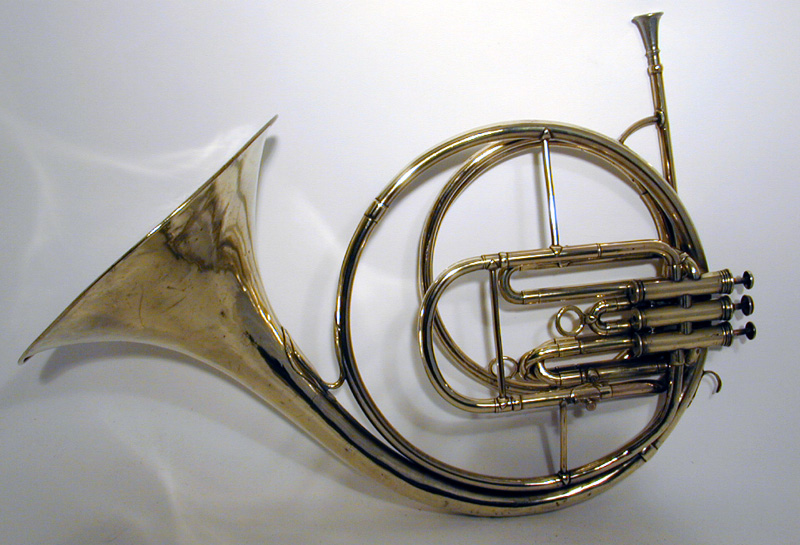
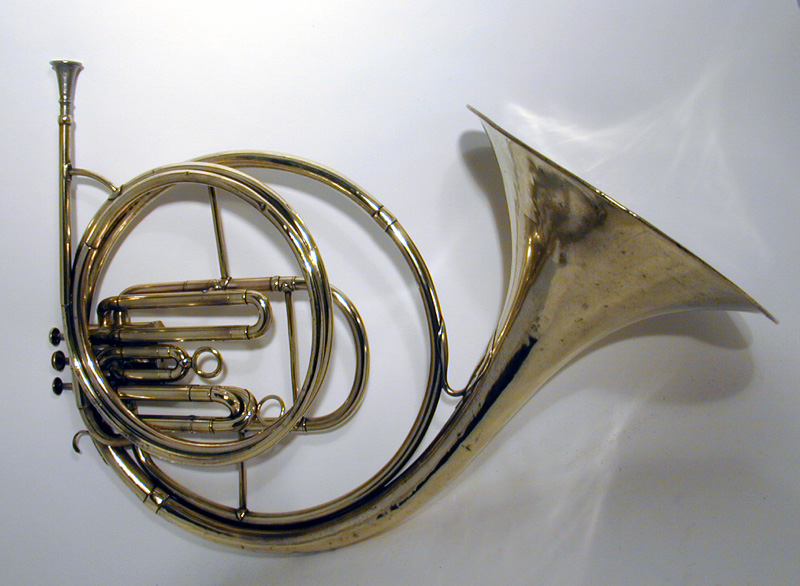 |
||
|
|
This horn is associatied with Louis Henri Merck (1831 - 1900), professor of horn at the Brussels Conservatory from 1866 to 1900. The firm of C. Mahillon was founded in Brussels in 1836 by Charles Borroméee Mahillon (1813 - 1887), who after serving apprenticeship in England returned to Brussels to become a partner with his brother-in-law, C.G. Bachman as Bachman & Mahillon. In 1844 they opened a branch in London and by 1847 were exhibiting both brass and woodwind instruments. By 1856 C. Mahillon became the most important wind instrument manufacturer in Belgium and was suppplier to the army, and also maker of percussion instruments. Around 1865 eldest son, Victor Charles Mahillon (1841 - 1924) was taken into the firm as a partner. The firm continued in operation by the family for a century until 1935. Two years later the firm was taken over by Jean Adrien Smits doing business under the name "Mahillon & Co. succ. J. Smits." |
|
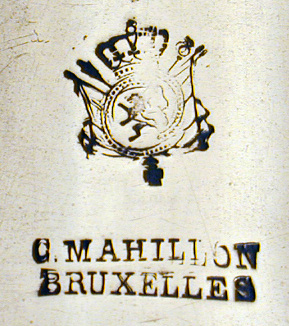
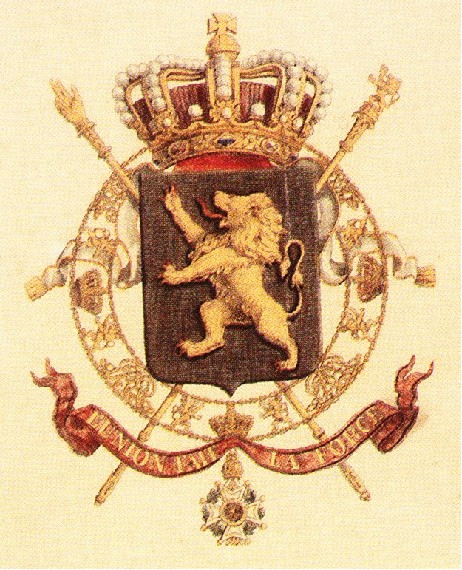
|
||
The simple label on underside of the bell of the horn includes the smaller seal (above right) of the arms of Belgium according to the Royal Decree of March 17, 1837 one year after the founding of C. Mahillon. This was probably required as a supplier of instruments to the army. |
||
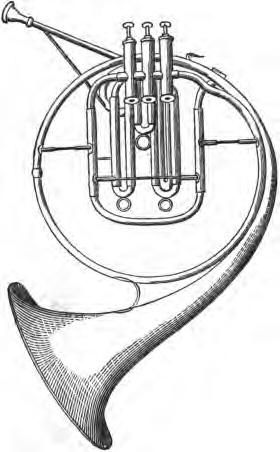
V.C. Mahillon, Éléments D'Acoustique, 1874, p. 140 |
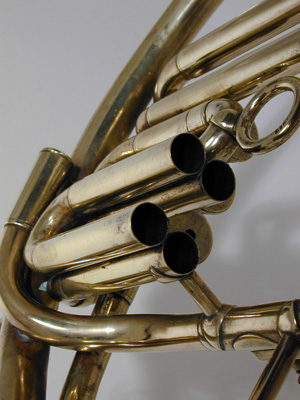
|
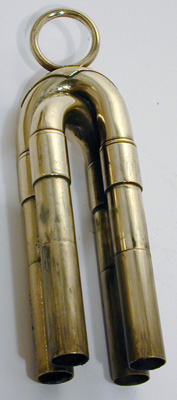
|
The above illustration from Victor Charles Mahillon's landmark Éléments D'Acoustique of 1874 shows the same characteristic Mahillon single horn wrap as this horn. In particular it has the peculiar folded over double loop wrap of the third valve slide (above center and right) as found on this this horn and the "Merck" model 499, shown at the bottom of this page. A later version of the 499 (see below) incorporated the simpler "J" slide as commonly found on French and English instruments. |
||
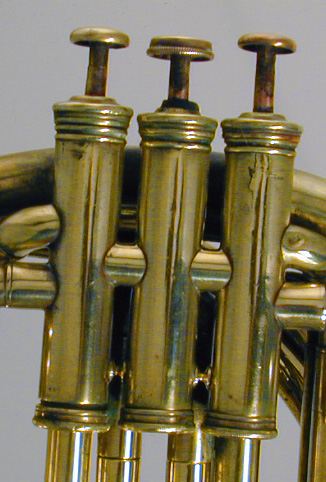
|
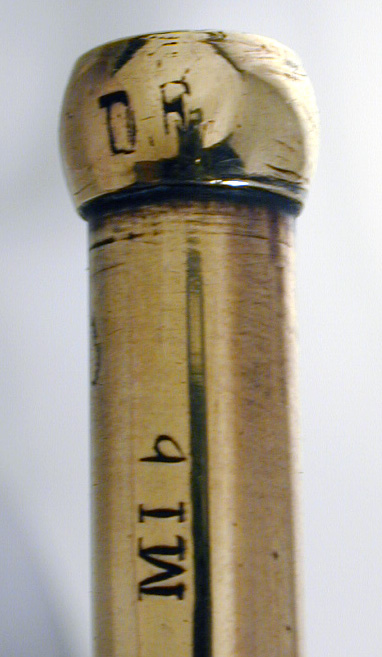
|
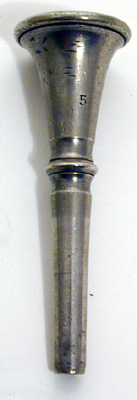
|
The valve section comprises three rather short Périnet valves. (The second valve cap is a replacement.) The terminal crook is marked for E-flat but plays in modern E (A=440). It is also stamped with "D R" for no apparent reason. The accompanying mouthpiece is marked "5" has a medium-wide rim (4.2 mm), deep cup (32mm), and very small throat (4.0 mm). The bell brace plate (shown below) is doubled and not particularly well finished. Overall the workmanship is competent but there are numerous remaining file and tool marks. |
||
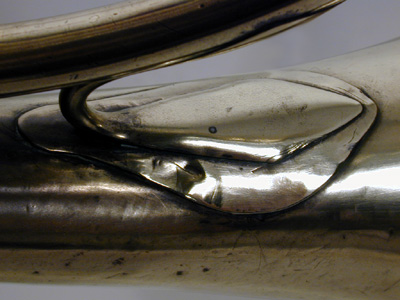
|
||
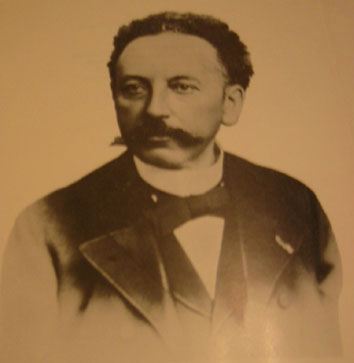 Victor Charles Mahillon |
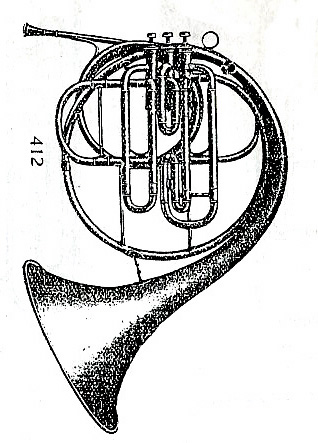
Model 412, 1926 Catalog p. 8 Larigot, No 26, p. 16 |
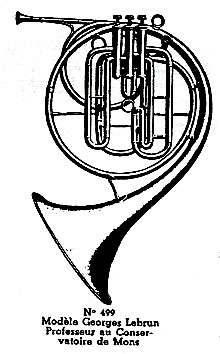
Model 499, 1937 Catalog (Smits) Larigot, No 32, p. 16 |
Victor Charles Mahillon (1841 - 1924) was born in Brussels on March 10, 1841. He is of outstanding importance as a writer on acoustics and musical instruments, and was the honorary and zealous custodian of the museum of the Brussels Conservatoire. |
||
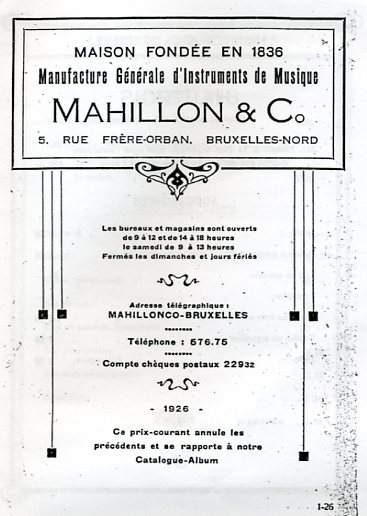
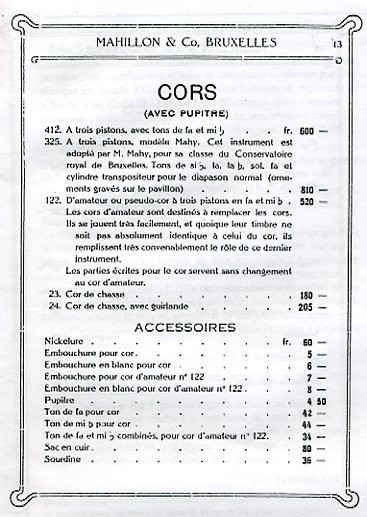
Larigot, No 26, pp. 19, 23 |
||
Louis Henri Merck (1831 - 1900) was born in Landau, Bavaria on September 7, 1831. He learned to play the horn at a young age from his father who was a member of the 42ndRegiment of the Ligne Français and by 1847 he was allowed to perform as solo horn with the 8th Belgian Regiment. In 1851 he became a student of Hubert Massart at the Conservatory in Luik where he received the first prize for valve horn by a unanimous vote. In 1853 he became solo horn with the Regiment of the Guides accompanying this corps on foreign tours, and for twenty-five years participated in the large festivals at Niederrhein. In 1866 he succeeded Jean-Désirée Montagney Artot (1803 - 1887) as Professor of horn at the Conservatory in Brussels. Merck's exceptional virtuosity was witnessed in the large number of solo concerts he played in his lifetime. Édouard Gregoir (1822 - 1890) described the horn playing of Merck as follows:Il a prouv que le cor, cet instrument si ingrat, se prete fort bien la virtuosit quand il est jou par un matre. |
||
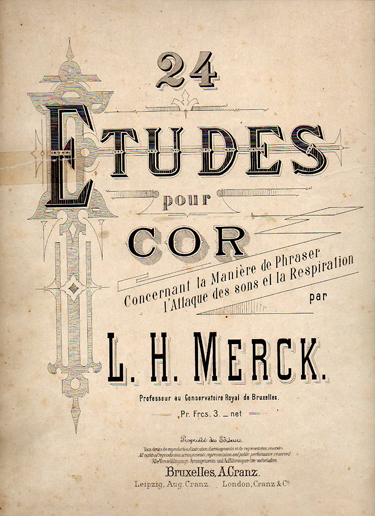
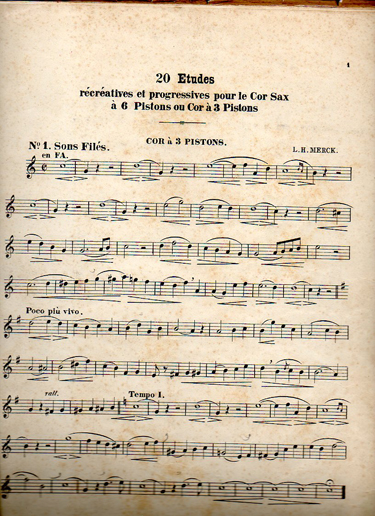
Above images provided by Pierre Dubar. (click to enlarge) |
||
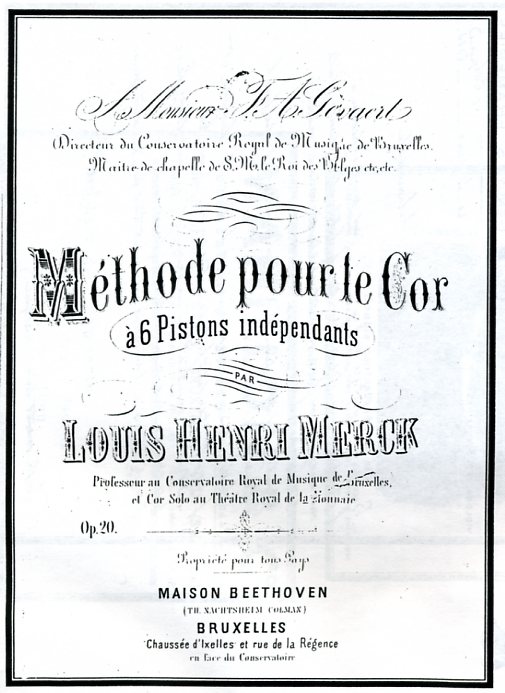
Larigot, No VIII Spécial, p. 30 |
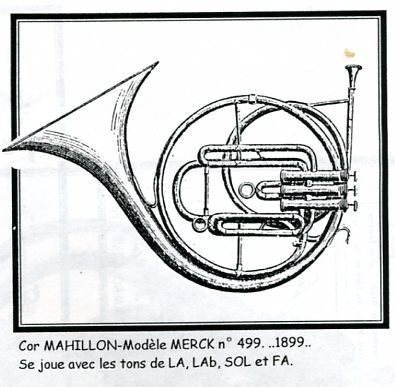
Larigot, No VIII Spécial, p. 30 |
|